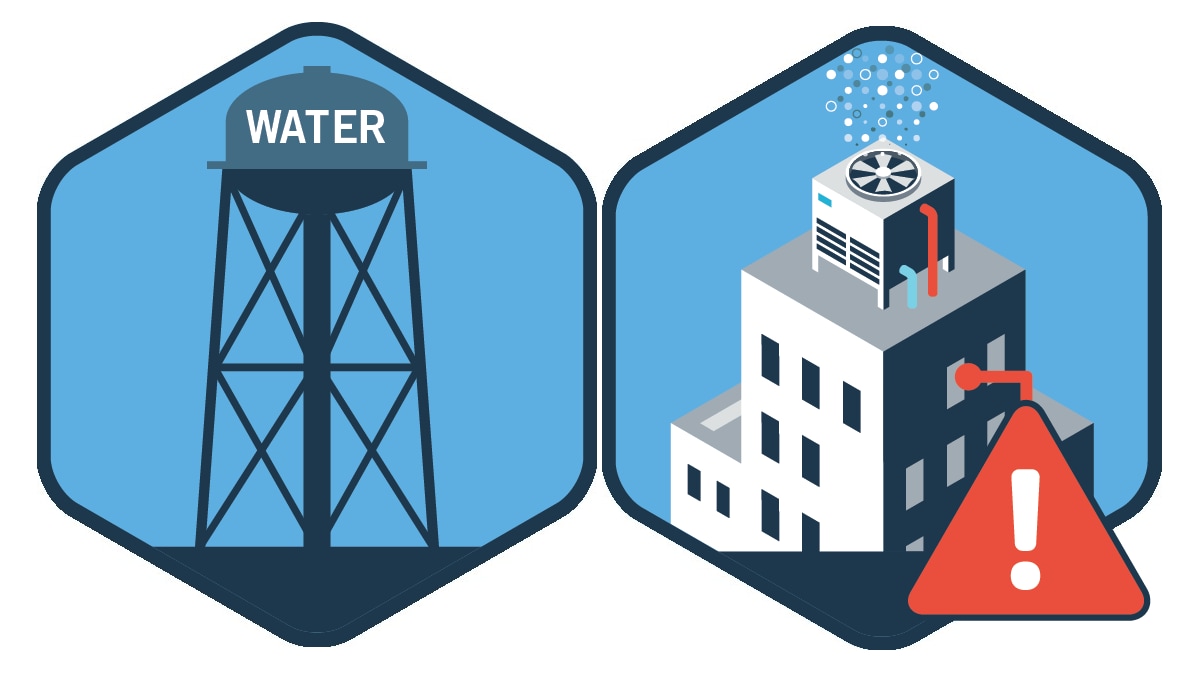Key points
- CDC defines community-associated outbreaks as an increase in Legionnaires’ disease cases in a certain geographic area.
- The information below supplements the considerations for all facilities, adding special considerations and specific activities for community-associated outbreaks.
- This page also provides considerations for unique exposure locations in a community like correctional facilities.

Recommendations
Conduct a full investigation (unique exposure sites)
Identifying one case justifies a full investigation at a correctional facility or other facility where people cannot leave the premises. Having spent the entire exposure period at the facility means the individual has limited exposure sources.
In general, treat outbreaks of Legionnaires' disease at such facilities with the same considerations as healthcare-associated outbreaks.
Consider conducting a full investigation (geographic area)
If available data show an increase in Legionnaires’ disease in a certain geographic area, consider a full outbreak investigation. For example, this would be appropriate if the current incidence is significantly higher than 5-year average rate of Legionnaires’ disease.
Considerations for a modified investigation
If available epidemiologic evidence isn't strong enough to warrant environmental sampling, consider at least conducting an environmental assessment. Look to see if conditions for Legionella growth exist in the building water systems or devices where people may've been exposed. The environmental assessment findings can then inform a decision about sampling for Legionella.
In some situations, the first step in an investigation will be to identify common sources of exposure for outbreaks such as:
- Cooling towers
- Decorative fountains
- Hot tubs
Specific activities
Obtain as detailed of an exposure history as possible for each case from the patient or a proxy. Sometimes a second interview can be helpful using a modified questionnaire based on new information gathered during the investigation.
CDC's Line List Templates are helpful to summarize case demographic, clinical, and exposure information specific to a community-associated outbreak.
Notify local clinical laboratories and healthcare providers for additional case finding (e.g., issue a health advisory notification [HAN]). Provide guidance for appropriate diagnostic testing and encourage retention of clinical Legionella isolates.
If the outbreak is ongoing, notifying the public can encourage community members to seek treatment early if they develop symptoms.
Map all patient residences and sites for daily activities (e.g., work, shopping).
Contact the local water authority to determine if there's been any changes that could've contributed to Legionella growth, including
- Major construction activity
- Modifications to potable water disinfection
- Water main breaks
- Water service interruptions
Consider cooling towers as a possible source if
- Cases are tightly clustered in time and neighborhood
- Patients lack common potable water exposures
